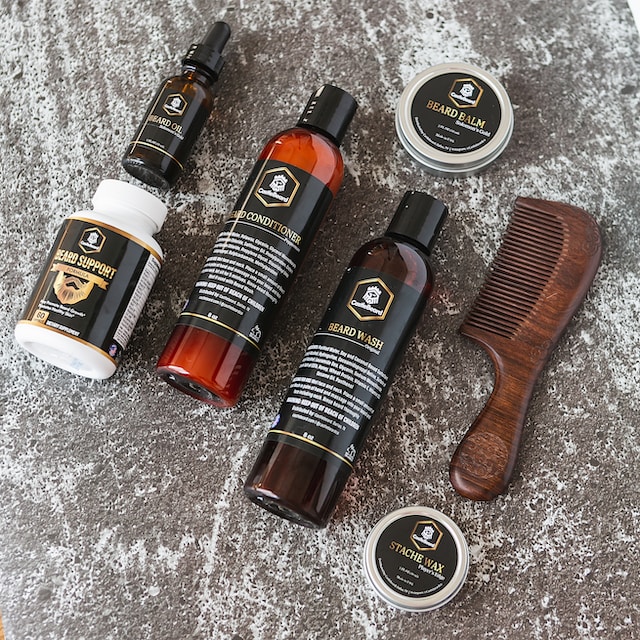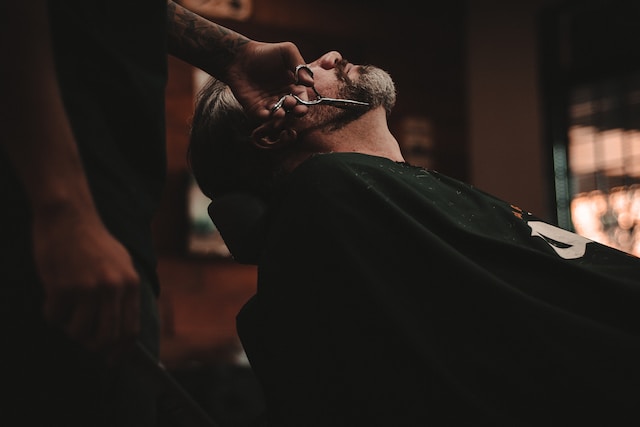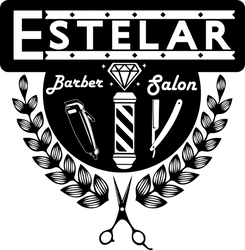Sporting a full, thick beard has become an increasingly popular fashion choice for men in recent years. However, growing a beard is just the first step – properly maintaining and grooming your facial hair is crucial for achieving a stylish and refined look. This comprehensive guide will walk you through everything you need to know to take proper care of your beard.
- Why Proper Beard Care and Grooming Matters
- Washing and Cleaning Your Beard
- Conditioning and Moisturizing Your Beard
- Trimming and Styling Your Facial Hair
- Beard Grooming Tools and Products
- Diet and Lifestyle Tips for Healthy Beard Growth
- Common Beard Problems and How to Fix Them
- When to See a Professional Barber
- How to Shave and Start From Scratch
- FAQ on Beard Grooming and Maintenance
- Conclusion
Why Proper Beard Care and Grooming Matters
Put simply, an unkempt, scraggly beard does your style no favors. When your facial hair looks messy and unkempt, it comes across as lazy and unpolished. On the other hand, a beard that is neatly trimmed and conditioned exudes self-confidence and attention to detail.
Caring for your beard goes beyond just appearance as well. Regular grooming habits like washing, conditioning, brushing and oil application keep the hair and skin underneath your beard healthy and comfortable. Neglecting these practices can lead to itchiness, dandruff, and irritation.
Make no mistake – properly maintaining a beard requires diligence and consistent work. But the payoff is well worth the effort. Invest some time in beard care techniques and you’ll be rewarded with facial hair that looks irresistibly handsome.
Washing and Cleaning Your Beard
The first step in beard grooming is keeping it clean. Build a habit of washing your beard 2-3 times per week using a mild beard shampoo or wash. Washing removes dirt, oil, dead skin cells, and other debris that builds up in your beard throughout the day.
When washing, concentrate the shampoo directly on your beard hair rather than your whole face. Work it down thoroughly to the skin using your fingertips. Rinse with warm water – never hot. Hot water can dry out and irritate the skin.
After washing, pat dry your beard with a towel. Avoid aggressively rubbing the hair, which can cause frizziness. You may also wish to use a beard conditioner or oil after washing. More on conditioning later.
In addition to regular washing, you should comb or brush your beard daily to distribute your beard’s natural oils and keep it tangle-free. Use a wide-toothed comb or boar bristle brush and gently work it through your entire beard, taking care not to tug or pull.
If you use beard styling products like oil or balm, brushing helps spread these products evenly while also removing any crumbs or other debris.
Conditioning and Moisturizing Your Beard
Washing clears away excess oil, so it’s crucial to follow up with a beard conditioner or oil, which restores moisture and suppleness. After washing and drying your beard, massage a pea-sized amount of oil or dollop of conditioner throughout the beard hair. This nourishes the individual hairs and the skin beneath.
Let the conditioner or oil soak in for several minutes before rinsing out any excess. Many men prefer applying beard oil, which absorbs fully and does not require rinsing. Beard oil formulas catered to different beard types, lengths, and complexions are widely available.
For particularly coarse or unmanageable beards, consider using a leave-in conditioner in tandem with oil. Look for lightweight hydrating ingredients like vitamin E, Shea butter, and Argan oil when selecting a conditioner.
Conditioning is a daily habit you’ll want to stick with. Facial hair soaks up moisture and can quickly become dry, brittle, and scratchy if neglected. Investing a few minutes each day conditions your beard while also making it more manageable and styleable.
Trimming and Styling Your Facial Hair
With a clean, conditioned base established, trimming and styling are the next steps in beard grooming. Use a quality beard trimmer with adjustable guards to maintain the desired length. Many men find a 3-5 day trimming frequency optimal, but this varies based on your hair growth rate. Trim less if your beard grows slowly.
It’s better to trim your beard in several small trimming sessions over the course of a week rather than removing a lot of length all at once. Take a little length off at a time and check periodically to avoid over-trimming.
Use your trimmer’s lowest guard setting first, then work up to the desired length. The goal is an even growth all over – not just trimming the scraggly bits.
Outline and define your beard’s cheek lines and neckline for a put-together look. Use the trimmer without a guard to create crisp lines and gently taper the edges. A trusted barber can help identify ideal beard lines based on your facial structure and style preferences.
Mustaches also require frequent trimming and training to avoid unruly hairs around the mouth. Brush your mustache downwards and outwards, trimming wayward hairs poking above your upper lip. Use mustache wax or pomade for a refined style.
For special occasions or an extra sleek look, visit your barber for a straight razor shave of your beard’s edges. This creates flawlessly defined lines and lends a classically handsome style.
Beard Grooming Tools and Products
Having the right tools and products in your grooming toolkit makes daily upkeep much easier. Stock up on these beard care essentials:
Beard trimmer – Invest in a rechargeable cordless trimmer with adjustable guard lengths. Quality brands include Wahl and Philips Norelco.
Beard shampoo or wash – Specially formulated washes help clean your beard gently yet thoroughly. Look for natural ingredients without harsh detergents.
Comb and brush – A wide-toothed comb detangles, while a boar bristle brush distributes oils.
Beard oil – These lightweight hydrating oils soften both beard hairs and the underlying skin. Coconut, jojoba, avocado, and argan oils are common ingredients.
Beard balm – Similar to oil but with a thicker consistency including beeswax or butter. Provides moisture and helps shape unruly hairs.
Mustache wax – Used to train mustache hairs to stay in place. Look for non-greasy waxes.
Beard conditioner – Leave-in formulas add supple fullness to coarse or dry beards. Many are creamy or buttery in texture.
Beard butter – These provide deep hydration for longer beards and soak into coarse and curly hair. Shea butter is a popular ingredient.
Straight razor – A traditional single blade razor creates impeccably sharp lines when used by a skilled barber.

Diet and Lifestyle Tips for Healthy Beard Growth
Caring for the beard hair is only half the battle – you must also provide the right internal conditions for your beard to thrive. Just like the hair on your head, facial hair depends on key nutrients to sustain growth.
Follow these diet and lifestyle tips to support full beard growth:
- Protein – Consuming adequate protein gives hair the building blocks it needs. Meat, fish, eggs, nuts and dairy provide protein.
- Healthy fats – Omega fatty acids nourish hair follicles and reduce inflammation. Get these fats from fish, avocados and nuts.
- Vitamins & minerals – B vitamins, zinc, iron and biotin are involved in beard growth. Eat plenty of leafy greens, legumes, citrus and berries. You may also supplement.
- Hydration – Drinking at least eight 8-ounce glasses of water daily keeps skin and hair hydrated.
- Reduce stress – High stress levels negatively impact hair growth and may spur excess shedding. Find healthy stress relief tactics like exercise, meditation or therapy.
- Sleep – Aim for 7-9 hours nightly. Skimping on sleep hampers your body’s ability to generate new hair follicles.
- Exercise – Regular exercise boosts testosterone and growth hormone levels which are key for beard growth.
Making nutrition and lifestyle adjustments gives your beard the best chance to grow in thicker and stronger. Be patient and stick with these habits – for many men, full growth potential isn’t reached until their 30s or 40s.
Common Beard Problems and How to Fix Them
Even with proper grooming, it’s normal to occasionally encounter some bumps in the road on your beard journey. Here are some effective troubleshooting tips for common beard woes:
Patchy growth – If certain areas of your beard fill in slower, apply a beard growth serum with nutrients that stimulate follicles in patchy areas. Derma rollers also improve absorption.
Ingrown hairs – Red bumps from ingrown hairs can be minimized with proper exfoliation. Use a face scrub 2-3 times a week or try dry brushing problem areas.
Flaky or itchy skin – Dandruff flakes and itchiness often stem from dryness. Increase conditioning and moisturizing. If that fails, try anti-dandruff shampoo once a week.
Unruly or frizzy hair – Use a beard balm, butter or wax daily when styling for better control over uncooperative hairs. Be sure to brush thoroughly.
Razor bumps – Redness and irritation under the beard line comes from shaving against the grain. Always shave in the direction of hair growth to avoid.
Patchy spots – Genetics play a big role, but ensuring proper nutrition and reducing stress can help fill stubborn sparse patches.
Tangling or knots – Brushing is key for preventing tangled clumps that are painful to comb out. Use a wide-toothed comb if hitting snags.
Don’t let minor setbacks discourage you in your beard journey. Persistence and attentive grooming will get your facial hair looking healthy and well-kept in the long run.
When to See a Professional Barber
While most beard care tasks can be handled solo, visiting a skilled barber every 4-8 weeks is recommended for keeping your style fresh. Professional barbers offer services like:
- Precision trim and shapeup using straight razors
- Identifying optimal beard lines unique to your face
- Detail work like crisply edged cheek and neck lines
- Mustache waxing and styling
- Stubborn ingrown hair extraction
- Head and beard haircut combination service
Look for an experienced barber who specializes in working with beards. Read reviews and check their portfolio to verify skill and style. Quality beard barbers are masters at bringing out the best in your facial hair. Periodic professional cleanup and maintenance makes a big difference in your appearance.
How to Shave and Start From Scratch
Deciding to shave off your beard and go clean-shaven? No problem – with the right technique, you can remove your beard without irritation. Here is the process:
- Prep – Wash your face and beard with warm water. Then apply shaving cream or lather from a shave soap. Let it sit for 2-3 minutes to soften the hair.
- Shave – Using a razor with multiple high-quality blades, shave in the direction of your beard growth. Rinse the razor frequently to avoid clogging.
- Clean up – Rinse off any remaining cream. Apply an aftershave balm using light patting motions. This soothes skin and closes pores.
- Moisturize – Follow up by applying moisturizer to prevent dryness. Better yet, use an overnight beard growth serum.
- Exfoliate – In the days after shaving, exfoliate daily with a face scrub. This prevents ingrown hairs.
- Repeat – Continue moisturizing and exfoliating as needed while maintaining your smooth look.
Once your beard is gone, your skin may feel a little sensitive. That’s normal. Follow these steps and your face will adjust quickly. The itchiness that comes with new beard growth can be relieved using a high quality moisturizer.
When you feel ready to grow your beard back, make sure you start with a clean shave. Use the same thorough shaving routine. Then put your beard maintenance techniques into practice from day one. Stay diligent and you’ll be sporting a fresh beard look again in no time.

FAQ on Beard Grooming and Maintenance
Q: How often should you wash your beard?
A: For cleanliness and skin health, wash your beard 2-3 times per week using a beard wash or mild shampoo. Be sure to rinse thoroughly.
Q: What’s the best way to dry your beard after washing?
A: Gently pat dry with a towel. Avoid rubbing vigorously, which can cause frizz and damage.
Q: Should you use beard oil or balm?
A: Yes, daily oil and/or balm application conditions beard hair and skin. Oils absorb fully while balms add shaping.
Q: What tools are useful for beard grooming?
A: Invest in a beard trimmer, boar bristle brush, wide-toothed comb, and scissors. Quality tools make grooming easier.
Q: How do you prevent ingrown hairs under your beard?
A: Exfoliate 2-3 times per week and shave in the direction of hair growth. This minimizes ingrown hairs.
Q: How often should you trim or shape your beard?
A: Every 3-5 days is ideal for most men depending on growth rate. Take off a little length at a time.
Q: What nutrients help beard growth?
A: Protein, vitamins like biotin, minerals like zinc, and healthy fats aid growth. Eat nutrient-rich foods.
Q: When should you see a barber for your beard?
A: See a skilled beard barber every 4-8 weeks for precision trimming and detailing work.
Q: What’s the best way to shave off a beard?
A: Prep with shave cream, shave in the direction of growth, rinse thoroughly, moisturize after. Take care to avoid irritation.
Conclusion
Growing a great-looking beard does not happen effortlessly. It takes knowledge, technique and consistency. Follow this comprehensive beard care guide and you’ll be rewarded with a beard that looks refined, feels comfortable and sparks compliments.
Make grooming a relaxing, enjoyable routine. Invest in quality products designed for beards. Trim and comb regularly to distribute oils and shape unruly hairs. Don’t neglect nutrition and lifestyle factors that impact beard growth. Address itchiness, patchiness or other issues promptly.
Lastly, don’t keep your beard care journey completely solo – visit an experienced barber monthly for finishing work like precise edging. A barber helps you present your best facial hair.
Remember – beard grooming is a long-term practice requiring patience. Commit to diligent care and you’ll gain a beard you can wear with confidence and pride. So grab your beard wash and scissors, and go make that beard look sharp!

